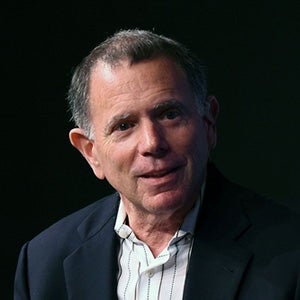Jerry Nickelsburg (JN): How important are Uber and Lyft to the California economy?
Leo Feler (LF): Just in California in 2018, Uber and Lyft added 171,000 jobs and $3.3 billion dollars to the California economy, in earnings for these drivers. This comes out to $20,000 per additional Uber and Lyft driver. It doesn’t capture the benefit to consumers, in terms of having the option of taking Uber and Lyft.
JN: Had these jobs not been created, what would these folks have been doing?
LF: Most of the drivers have other jobs and other sources of income. If not for Uber and Lyft, they may not have had the opportunity to earn supplemental income. Since there are such low barriers to entry, it’s not clear that there would have been alternatives or that these jobs would have been created in another sector.
JN: So this may be substituting for leisure time, and drivers would prefer to drive for a few hours or a few days a week to earn additional money.
LF: Exactly. There was a recent survey of Uber and Lyft drivers in California. More than half drive for less than 16 hours per week, 84% had other full or part-time jobs, and 74% said they drove for supplemental income. The majority of Uber and Lyft drivers are doing this on the side.
JN: The court ruled that Uber and Lyft drivers fit the requirements that the State has set for defining who is an employee. Uber and Lyft are sponsoring an initiative to get an exemption. What are the key issues?
LF: This is Proposition 22. It exempts Uber, Lyft, and other platform drivers, including delivery drivers for services like Doordash and Uber Eats, from being classified as employees. The key question is who has the responsibility of paying the taxes and benefits associated with these drivers. Is it the companies? Or is it the drivers themselves, as independent contractors?
JN: In this recession, Uber and Lyft drivers received unemployment compensation even though they didn’t pay unemployment compensation taxes. This social insurance has been picked up by tax payers. What are the equity issues here?
LF: This recession is very unique. We specifically wanted to incentivize people to stay home to contain the virus. It’s not clear what it means to be unemployed from Uber and Lyft because there’s never a point where Uber and Lyft lay off drivers. Whenever demand resumes, drivers can come back on. In this recession, we have seen a big surge in demand in delivery services like Instacart, Doordash, and Uber Eats. The benefit of being an independent contractor is you can easily shift from using the Uber or Lyft platforms to using one of these delivery platforms. The State benefits in terms of tax collection from the extra earnings generated from Uber and Lyft. It comes in the form of income tax payments that drivers pay on the supplemental income they’re earning, which they might not have earned otherwise.
JN: Let’s suppose the initiative fails and platforms have to pay into the State’s unemployment and workers’ compensation funds. They’re going to have to raise prices or perhaps reduce their profits. What would be the magnitude of this?
LF: Uber is saying that prices would increase 25% to a 100%, depending on location. But this estimate is based on shifting drivers to being employees, not just paying payroll taxes. It’s also the overhead, administrative, management, and supervision costs of having employees that you now have to manage. Uber’s estimate is that this would reduce demand for trips by 20% to 60%, so we could see a really large decline in the number of consumers taking trips.
JN: In your article, you talk about putting the administrative costs, as well as the costs of contributing to social insurance funds, on the drivers so that the drivers would be covered and get benefits. This would mean a pay cut for drivers, because they have the hassle of filing and they have to pay the taxes. At the margin, you’re going to have drivers who say it’s just not worth it, it’s too much of a hassle. Don’t you get the same effect, whether the incidence is on the drivers or on the platforms?
LF: Not exactly. The drivers already pay taxes, because they get 1099 tax forms that they file. The question is, in addition to the 1099s, whether there are any supplemental taxes they now have to file.
JN: So they’ll have lower income, but the administrative costs won’t be as high.
LF: They already have the administrative costs, in the sense that as 1099 contractors, they receive income, keep receipts for gas and car maintenance, and deduct these as business expenses. What we’re talking about is incremental taxes they may need to pay. The suggestion I have is that this shouldn’t be passed on to drivers, but there could be a surcharge on passengers, which is essentially the equivalent of raising fares. We’ve seen this in other cities and states. The City of Chicago, for example, has several different taxes baked into the final price that a rider pays. In the same way, the State of California, and its cities and counties, could, if they wanted to, impose a tax on rideshares to pay for benefits to drivers.
JN: I think your suggestion is, if the proposition passes, the State has an option to have contractors or platform workers be taxed separately to cover the social insurance.
LF: This could be implemented similar to a sales tax on Uber and Lyft rides. It can be paid by the user of the service, not the driver.
JN: Uber and Lyft lose money. They’re going to have to raise prices. How much are they going to have to raise prices if they have to start paying payroll taxes for their drivers?
LF: The rideshare business itself has matured and was right at the breakeven point before the pandemic. That means that if we then impose costs associated with having employees, not just paying payroll taxes, but of managing and supervising employees, then their costs go up, and in order to breakeven or be profitable, they have to pass these costs on to consumers or they have to decrease compensation for drivers.
JN: The incidence can be split, some on the drivers, some on investors, some on customers. I look forward to going back and rereading your paper after our discussion.
LF: Thanks for the excellent questions. I hope this was useful and informative.


